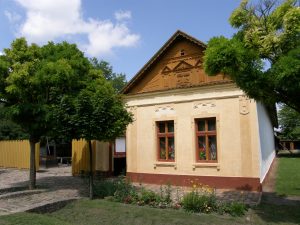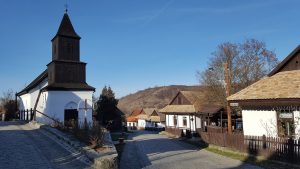These houses can teach you about Hungarian ethnography – Photos

A village museum or, as Hungarians call it, a ‘Skanzen’, is a good opportunity for learning about how people lived in the past. See the typical houses and the equipment that they used in their everyday life. Let’s see some of Hungary’s excellent village museums.
Ópusztaszer Outdoor Ethnographical Museum

Ópusztaszer’s museum includes nineteen buildings and three outdoor exhibitions. One is the South-Lowland’s folk-architectural characteristics from 1850 to 1930.
Here, you can learn about village life and the different old professions which do not exist today. Anyone can have a glance inside the 19th- and 20th-century schools, the post office, even a grocery shop. It is also worth visiting the windmill and bakery store, or the Csillagösvény Maze. In the spring and the summer, one can take part in cooking or grilling programs and activities, which resemble the old ones. Going around the collections in Ópusztaszer, you can learn a lot about the peasants’ life in this era.

Szentendre Outdoor Ethnographical Museum
Hungary’s biggest outdoor ethnographical collection and museum has been operating since 1967 in Szentendre. One can find the most characteristic folk architecture of different Hungarian landscapes and typical homes of society’s various layers.
The “Szentendre skanzen”, as Hungarians call it, represents the country’s typical lifestyle in about 400 buildings of 10 ethnographic landscapes. The museum covers the era between the 18th and the middle of the 20th century.

Hollókő Village Museum
The old palóc village of Hollókő is part of the World Heritage because it has kept the traditions of the former centuries. The folk architectural complex truly evokes the village’s early 20th-century image. The museum, located opposite the village’s church, has been operating since 1964 as a museum.
Hollókő has one street and about fifty houses, with less than 400 citizens. There is a picturesque panorama from the castle to the Catholic church of the village and to the Cserhát forest. The people of Hollókő are still very colourful, as they wear traditional palóc clothes even today.

Vas Village Museum
This museum opened in 1973 near the western Hungarian city of Szombathely. Vas Village Museum shows us the diverse villages of Vas county. If you wish to learn about how people in Western Hungary lived in the 18th to 20th centuries, then this museum is definitely a must-see.
You can see how churches, chapels, bridges, windmills, blacksmiths’ workshops, rest houses, pubs, shops and schools looked like in these times. One can even get acquainted with typical plants and animals of the county, or with vineyards, too.
Featured image: https://www.facebook.com/SKANZEN.HU/
Source: szeretlekmagyarorszag.hu





